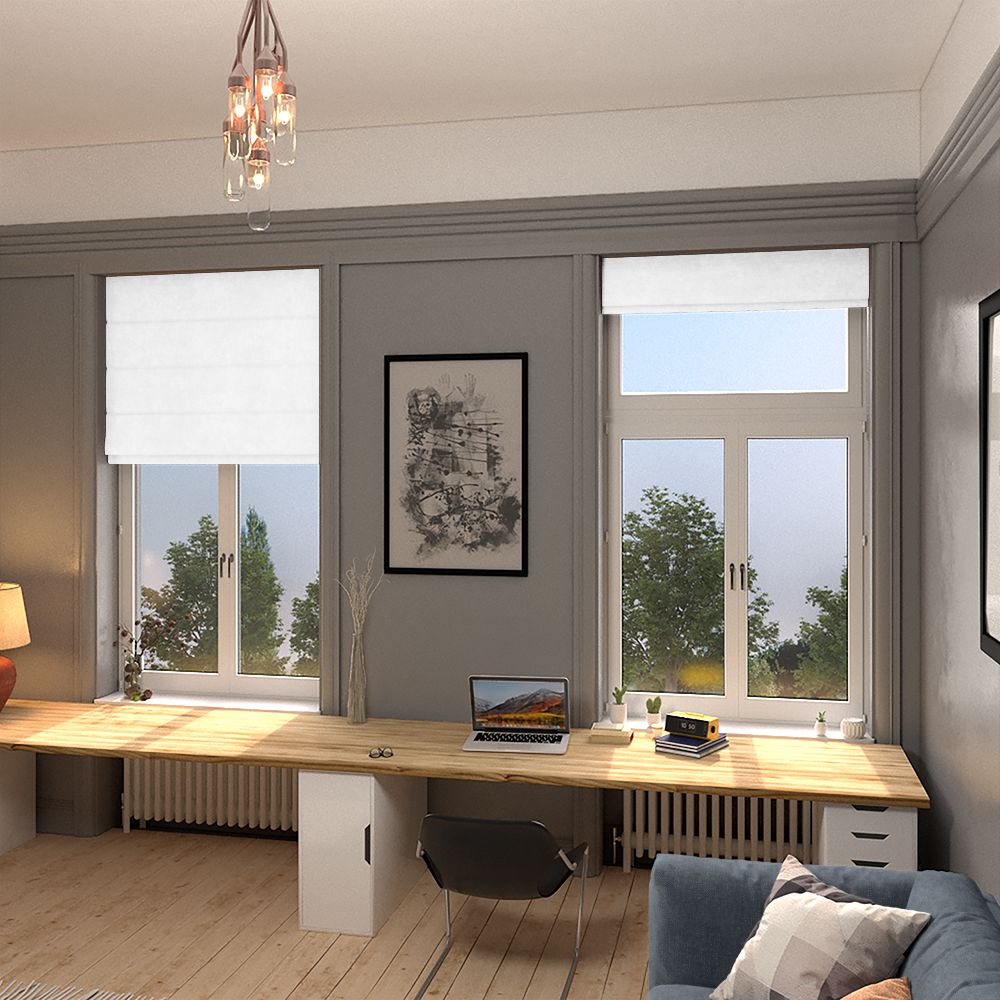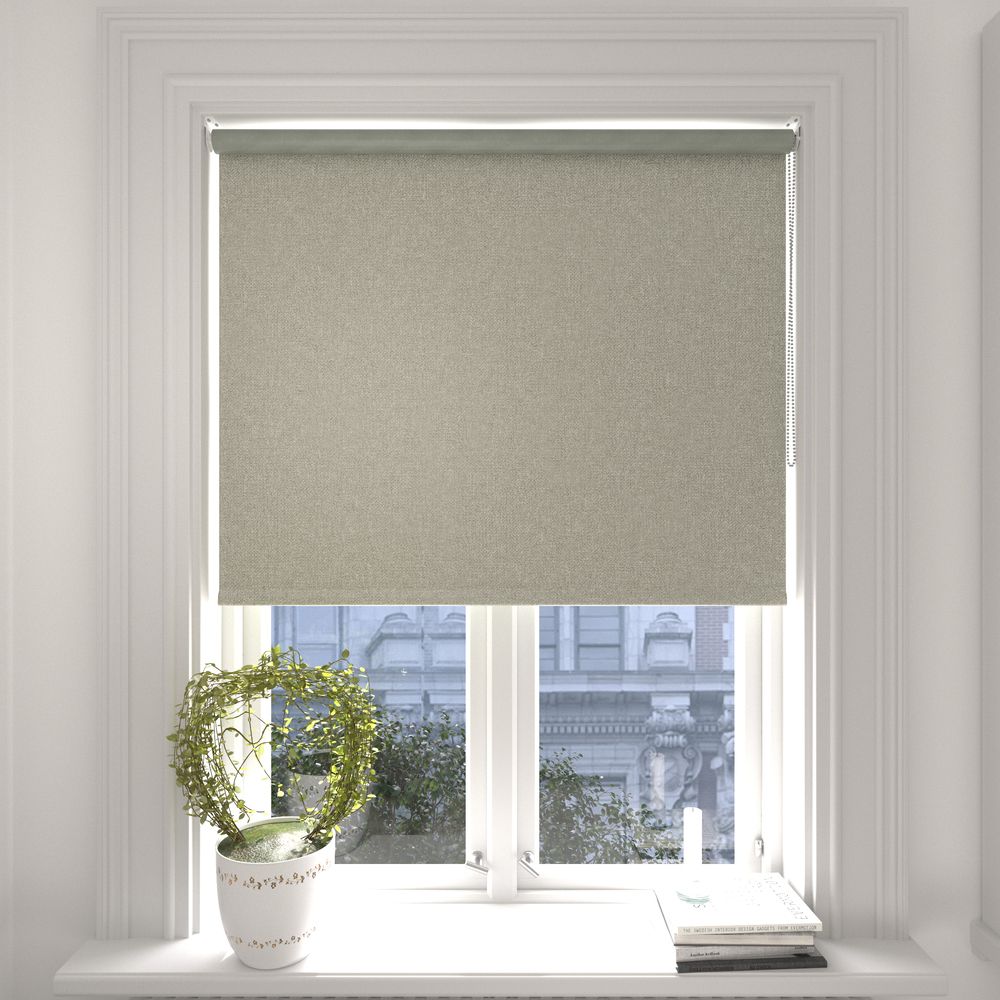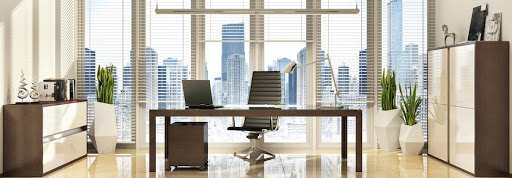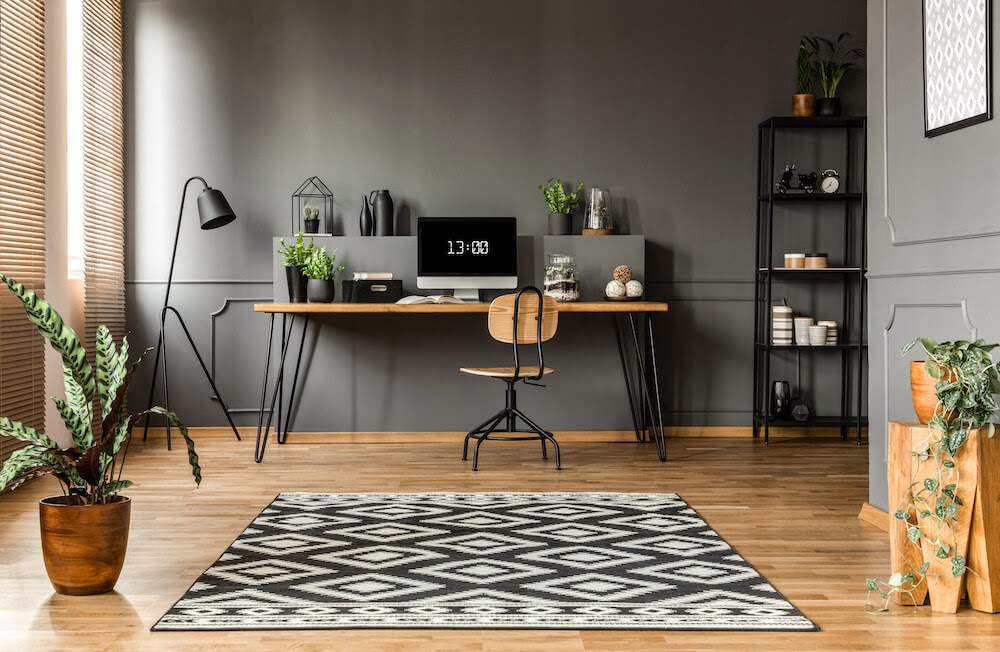Whether you’re designing a stunning home office so you can skip the commute or need to pick out window treatments for your commercial office space, making the right decision can be overwhelming. Maybe you don’t have the time for endless research on the best styles. Perhaps you simply can’t make a decision between two blind types. Or worse, it’s possible you don’t even know where to begin.
Fortunately, choosing window blinds doesn't have to be a pain. In fact, it can be a fun way to breathe new life into your workspace. Here, we’ll show you the best office blinds and give you tips on how to choose the best one for your needs. Best of all, it’ll just take a few minutes so you can check office blinds off your to-do list and get back to being productive.
The 5 Best Office Blinds
When it comes to the best office blinds, material and design are key. Most offices these days require you to use screens. Without the right blinds, glare from the sun or passing cars can make it difficult for you to stay productive. Commercial offices and home offices may also require a certain degree of privacy, especially if you work in a sensitive sector such as law.
However you use your office, there is a blind style to meet your needs. They come in a huge range of colours and patterns so you can match the décor of any office. Here are some of the best blinds for commercial spaces and home offices.
1. Roman Blinds
Roman blinds are made of one large piece of fabric. They come in voile and translucent fabrics that allow natural light to delicately filter into a room as well as blackout fabrics that block out light completely. This style is particularly common for commercial office blinds because they impart an elegant and sophisticated air. As you raise the blinds, the fabric gently folds over, creating a layered look that's reminiscent of regal Renaissance style.

2. Roller Blinds
Like roman blinds, these blinds are made of fabric and can be found in blackout or voile designs. Roller blinds offer a sleek and minimal aesthetic. The fabric rolls up on a headrail so they don’t take up as much space as roman blinds. They can be used to create a statement piece by choosing roller blinds in vibrant colours or patterns or you can stick to neutrals if you’re creating an understated office design.
Choose a blackout fabric for your office roller blinds if you tend to work in the evenings and need to block out light from the streets. If you prefer to work during the day and want to have some light, but don’t want to deal with glare, go for a dimout blind made of more translucent fabrics.

3. Venetian and Wooden Blinds
These are among the most popular office blinds. These types of blinds feature horizontal slats made of real wood, faux wood, aluminium and PVC. The slats are held together by cords and they move up and down when you raise and lower the cord. You can also tilt the slats 180- degrees to further control the amount of light that enters your office.
Since you can adjust light not just by raising the blinds, but also by tilting the slats, office venetian blinds are more versatile than their fabric counterparts. They are particularly useful in office environments since you can adjust the light as the sun changes position throughout the day. Tilt the slats inward in the early morning hours to warm up the room and then tilt them outwards in the afternoon to direct light away from your screen if it’s causing a glare.
Venetian blinds are also made of more materials compared to fabric blinds. You can choose real wooden blinds to add a touch of warmth to an office or you can go for cold, sleek aluminium for a more contemporary look. There are also several colours in addition to natural wood grains including grey, black and white that you can use to improve your office aesthetic.
4. Day & Night Blinds
If you’re looking for versatility, day and night blinds are a great choice for office window blinds. These blinds feature two alternating strips of fabric - usually one that is translucent and one that is opaque. You can adjust the blinds so the voile fabric is showing to allow light into the room. Alternatively, adjust the blinds so the opaque fabric is dominant to block out light if it’s causing a glare.

5. Vertical Blinds
Does your office have large windows or doors that allow you to go out onto a patio or garden? Vertical blinds are a great option for these offices. The blinds feature tall slats that run up and down rather than horizontally. They are well-suited for extra-large windows that may be too large for horizontal blinds.
Plus, you don’t have to adjust these blinds in order to use bifold or French doors. Since the slats are vertical, you can slip in and out as you please without touching the window treatments.
Things To Consider When Choosing Office Blinds
Before you buy blinds, it’s important to put some thought into how you use the space and which blind can best help you create the environment you’re looking for. In terms of office blinds, screen glare and light are among the top considerations.
Think about how you use your office and workspace. Are you in that room only for a few hours during the day? While you work, do you want to be able to look outside at a picturesque view or do you need maximum privacy from passer-by outside? If you want views, a dimout blind is the way to go. If privacy is your main concern, a blackout blind or a bottom-up blind can meet your needs.
Do you tend to work late into the night? If yes, you may need to consider how your office blinds will handle artificial light from streetlights or cars driving down the street. By identifying how you use the space, you can figure out what type of blinds are best for your office, whether it’s in your home or downtown in a larger building.
It’s not just the type of blind that matters either — materials are also important. Look for materials that can help reflect or block light so you can use your computer and other tools without being blinded by the sun. Blinds with slats can offer great light control and enable you to tilt them to reflect light back outside, preventing glare. Fabric blinds can absorb some of the brightness of the light, reducing reflections that can make it hard to read your screens.
You may also want to look for thermal blinds or materials that are energy-saving or flame retardant for your office. This is particularly important for commercial offices as UK law requires that window dressings meet certain flame retardant thresholds. This helps to protect the building and decrease the likelihood of rapid fire spread within an office building.
Thermal blinds can help save you money when it comes to heating or cooling your office building. These include pleated blinds, honeycomb blinds and other styles with layered fabrics that create an insulating layer. It can help trap heat inside the office space during the cold winters and block heat outside when temperatures skyrocket in summer.



